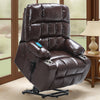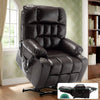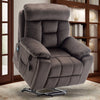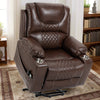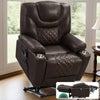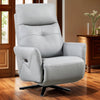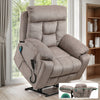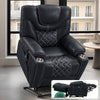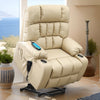Understanding the Benefits of Hot Oil Massage
The Therapeutic Effects of Warm Oils
Hot oil massage offers unique benefits due to the use of warm oils. The heat from the oil helps to relax muscles and improve blood flow. This can ease tension and reduce stiffness in the body. The oils used are often infused with herbs or essential oils. These add extra healing properties to the massage.

Warm oils can penetrate deeper into the skin. This allows for better absorption of nutrients. It can help nourish and moisturize the skin. Some oils have anti-inflammatory properties. These can help reduce swelling and pain in sore muscles and joints.
The warmth of the oil can also create a soothing effect. This helps to calm the mind and reduce stress. Many people find the sensation of warm oil very comforting. It can enhance the overall relaxation experience of the massage.
How Hot Oil Massage Promotes Relaxation and Pain Relief
Hot oil massage is known for its ability to promote deep relaxation. The warmth of the oil helps to ease muscle tension. This can lead to a greater sense of overall relaxation. As the muscles relax, it becomes easier for the massage therapist to work out knots and tight spots.
The heat from the oil can also help to reduce pain. It does this by increasing blood flow to the affected areas. This improved circulation can help to reduce inflammation. It can also speed up the healing process for sore or injured muscles.
Many people find that hot oil massage helps them sleep better. The relaxing effects can last for hours after the massage. This can lead to improved sleep quality. Better sleep can help with overall health and well-being.
The Differences Between Hot Oil Massage and Traditional Massage
The Role of Oils in the Massage Experience
In hot oil massage, the oil plays a central role. The warm oil is applied generously to the skin. This allows for smooth, gliding strokes. The oil helps reduce friction between the therapist's hands and the client's skin. This can make the massage feel more comfortable and soothing.

Traditional massage may use oils or lotions, but in smaller amounts. The focus is more on the pressure and techniques used. In some forms of traditional massage, no oil is used at all. This allows for more direct pressure and deeper tissue work.
The type of oil used in hot oil massage is often chosen for its therapeutic properties. For example, coconut oil may be used for its moisturizing effects. Sesame oil is popular in Ayurvedic massage for its warming properties. In traditional massage, the choice of oil or lotion is less important.
Techniques and Pressure: Comparing the Approaches
Hot oil massage typically involves long, flowing strokes. These strokes help to distribute the warm oil evenly. The pressure is often lighter than in traditional massage. The focus is on relaxation and the soothing effects of the warm oil.
Traditional massage can include a variety of techniques. These may include kneading, tapping, and deep tissue work. The pressure can vary from light to very firm. The therapist will often focus on specific problem areas. They may use more targeted techniques to address muscle knots or tension.
In hot oil massage, the therapist may use their forearms or elbows to apply pressure. This helps to maintain contact with the warm oil. Traditional massage often relies more on hand and finger techniques. The choice of technique depends on the specific type of massage being performed.
Making the Right Choice: What to Consider Before Your Massage
Assessing Your Needs and Preferences
When choosing between hot oil massage and traditional massage, consider your goals. If you're looking for deep relaxation and stress relief, hot oil massage may be ideal. The warmth of the oil can help you unwind and let go of tension.

For specific muscle pain or injuries, traditional massage might be more effective. It allows for more targeted work on problem areas. If you have certain skin conditions, you may need to avoid hot oil massage. Always check with a doctor if you have any health concerns.
Think about your comfort level with oil. Some people love the feeling of warm oil on their skin. Others may find it too messy or uncomfortable. Consider any allergies or sensitivities to oils or fragrances.
The Importance of Expertise and Certification in Massage Services
Regardless of which type of massage you choose, the skill of the therapist is crucial. Look for therapists who are certified and have experience in the specific type of massage you want. For hot oil massage, make sure the therapist is trained in the safe use of heated oils.
Ask about the therapist's training and credentials. Reputable massage therapists will be happy to share this information. They should also ask about your health history and any concerns you have. This helps them tailor the massage to your needs.
Consider the setting where you'll receive the massage. A calm, clean environment is important for both types of massage. For hot oil massage, the room should be warm enough to keep the oil at the right temperature. A comfortable massage table or lay flat recliner chair is essential for a good experience.
In conclusion, both hot oil massage and traditional massage offer unique benefits. Your choice depends on your personal preferences and health needs. By considering these factors, you can choose the massage that's right for you.









